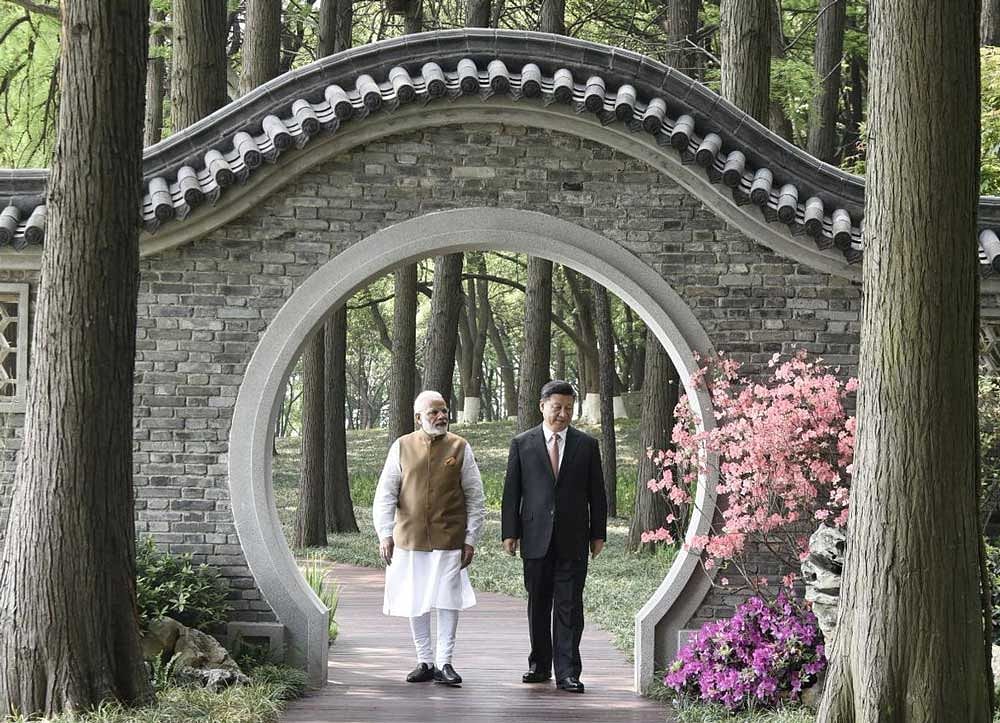
As the Asian states rake up to confront defining alterations at the regional front, it is time to ruminate over the major occurrences of the past few weeks. In hindsight, the last month has been defining in more ways than one. As we witnessed the historic meeting between North Korea and South Korea, most strategists were thrown off-guard by the warming up of ties between Chinese President Xi Jinping and Prime Minister Narendra Modi. These two events have unusually redirected the relationship these leaders share in this part of the world.
One common thread in both the occurrences was the posture of the regional players to take on a more vibrant role of forging peace in the region. It came on the face of an overwhelming US that has been making inroads into the most volatile conflicts in the region. US president Trump’s rejuvenated interest in the conflict zones, especially in Afghanistan, has grabbed major eyeballs.
Having announced a meeting with the US, President Kim Jon Un’s advancement towards South Korea is a classic example of how the regional hegemon curtails the global hegemon from accessing excessive power that could cause erosion of the former’s power. Also, noteworthy has been the “informal meeting” between China and India, a series of talks that saw penning down of an economic venture in Afghanistan.
It is surprising that China, which has been voicing pronouncedly for Pakistan and has acquiesced massive support for its cause in Afghanistan, has taken a step to consolidate its relationship with India. This could be an attempt to sideline existing tensions in the post-Doklam scenario and gear the direction of regional partnerships to a positive outcome.
As a welcome move by Xi, India is keen to pursue greater economic growth in Afghanistan, however, it is of immense strategic significance for Delhi to also see through the bigger strategy of Beijing. In the larger scheme of things, Xi’s position of President for life seems to have prompted India’s revived interest in engaging with China. It has been also confirmed that Beijing will not engage in convincing New Delhi to join the “Belt and Road” initiative as a natural expectation after re-establishing cordial relations with India.
On the other hand, tensions between the US and North Korea has flared up, as recently, Kim warned Trump not to engage in any sort of manipulation pertaining to denuclearisation of North Korea. To this end, North Korea’s intention to initiate friendly ties with South Korea is a step in the right direction. It also symbolises concerns of Pyongyang towards US intervention in Asia-Pacific and the incessant pressure on Pyongyang to restrain itself.
In the global domain, bilateral ties between the US and China have experienced a perceptible slowdown that has repercussions on their multilateral partners in the region. A close look would suggest that China’s rejuvenated interest in India could be a hedging strategy against the unpredictable US.
As a nation-state with huge aspirations of being a global power, China is at the crossroads. The US’ overwhelming presence in the region is not just threatening the role of China, but also shaping its perception of others in the region. The perception of China is heavily inspired by its aspirations of being a global hegemon.
In a similar manner, North Korea is equally concerned about US interventions, which could be one of the underlining reasons behind its renewed South Korea policy. In this scenario, intentions of these actors— the US — could be perceived as the germination ground for a new global order.
Rise of regional faction
Earlier, India, Japan and Australia came together to discuss their common interests and shared commitments, which was held right after the Russia-India-China ministerial meet concluded. This confirmed India’s insistence on maintaining strategic autonomy that has been a core component of its foreign policy since Independence.
In a rush for capturing more power in the regional ambit, India and China have decided to cooperate in Afghanistan, which solidifies the ground for a peaceful transition. If this trend continues, the possibility of a nuclear war will subside laying grounds for a regional faction united to forge peaceful ties in the face of embroiling conflict. To this end, it is of much significance for the major players to ensure the smaller states have a challenging role to play.
As the sub-continent faces a massive humanitarian crisis with the Rohingya population, it is pre-eminent for the region to forge a resolution whereby the universal human rights of the underprivileged population are preserved.
The coming together of China and India, and North Korea and South Korea, is a positive move towards resolving major conflicts in the region circumventing intervention of an external third-party, a role that the US has been envisioning for itself for a long time. It remains to be seen if this would pave the way for a long-term peaceful resolution and turn into a template for other states to emulate, especially India and Pakistan.
(The writer is a senior analyst with the Global Risk Insights)